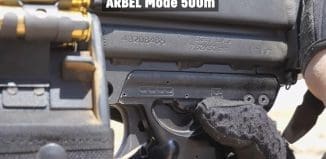Management of Intelligence Gathering and AI-Based Terrain Dominance Missions in the Modern Battlefield
This post is also available in:  עברית (Hebrew)
עברית (Hebrew)
Creating situational awareness with regards to enemy forces presents a complex operational and technological challenge in the modern era. Western technological superiority drives the enemy to employ approaches and tactics that try to challenge the efficiency of these technologies through asymmetric warfare, operating within populated urban environments, and the “disappearing enemy” concept. These tactics have created a considerable operational gap in the management of a continuous and efficient intelligence gathering capability that is designed to provide effective target acquisition and a rapid kill chain.
While the enemy’s challenge is well understood, the techno-operational capabilities required to deal with this challenge are not yet sufficiently mature. The objective is to effectively cover wide areas, including target detection, tracking, classification and prioritization, while taking into account the targets’ lifecycle and degree of importance. All this is required in order to feed relevant information to the decision-making process of the relevant mission commanders.
Moreover, the use of multiple and diverse intelligence gathering systems, operated and managed separately, results in sub-optimal resource utilization. For example, a visual intelligence system operating in a certain area on behalf of one user does not fully utilize its capability to help another user that is interested in a different target within its coverage area. This gap is further sharpened in an age of multidisciplinary intelligence gathering platforms. These platforms yield target signatures in several dimensions, distribute information to fire centers, and contribute to the creation of enemy situational awareness and the closure of rapid kill chains.
Intelligence Gathering in the Era of Multi-Domain Warfare
Multi-domain warfare is designed to provide the ability to attack enemy targets at a rate that the enemy cannot withstand. The multi-domain warfare concept shifts the combat management paradigm from one-dimensional hierarchies and patterns (in which a platform with a specific sensor is used for a specific mission) to a distributed management approach (where each platform using advanced management tools can serve several missions and users). This makes resource allocation more efficient.
Therefore, there is a need to provide supporting intelligence at a sufficient rate, resolution and precision, while properly managing the intelligence gathering resources by using a “many-to-many” approach (in which multi-sensor platforms serve multiple users).
Omnisys’ Intelligence Gathering Solution
Omnisys specializes in the development and supply of mission optimization and battle management systems. The company provides the Israel Ministry of Defense, the IDF, and major defense companies with systems that optimize operational performance, enabling forces to optimally execute missions and maximize performance in the battlefield.
The company’s vast experience encompasses the provision of planning and optimization systems for intelligence missions, including ISR and terrain dominance, based on optical and electro-optical sensors, SAR, GMTI, SIGINT, and so forth. These systems optimize force utilization while addressing intelligence gathering requirements.
Omnisys’ BRO for Intelligence Gathering (BRO-IG) system includes three integrated products providing end-to-end optimization during the mission’s entire lifecycle for remotely piloted aircraft system (RPAS), UAV, and drone intelligence gathering arrays. Together, these products maximize mission performance throughout all mission stages – pre-mission planning, in-mission management, and post-mission debriefing.
BRO-IG Planner: This product enables optimal pre-mission planning, based on the ability to receive as inputs both intelligence gathering requirements and intelligence gathering resources, and produces an optimal intelligence gathering operational plan in accordance with the planner’s policy. This includes the prioritization of the mission’s gathering resources and platforms, as well as route planning and sensor configuration selection for individual platforms and autonomous swarms.
BRO-IG Commander: This product receives real-time status and priority changes in the intelligence gathering requirements, as well as status updates with regards to the operability status and availability of intelligence gathering resources. It then revises the operational plan accordingly in order to optimize mission performance.
BRO-IG Debriefer: This product provides extensive debriefing capabilities, transforming masses of data into actionable information. This includes automatic analysis of trends and changes in enemy behavior as well as in own sensor performance, as the basis for future operational decisions.
The BRO suite includes, among others, techno-operational simulation models of intelligence gathering platforms and their sensors, enemy forces, and the operational environment. An intuitive user interface supports the definition of policies and concepts of operation, which guide the mission optimization performed by the different products.
Omnisys’ groundbreaking solutions, which provide mission performance optimization and critical decision improvement, have been tested and proven in battle conditions, and are currently sold to leading military forces around the world. Omnisys’ technology is certainly a game-changer in the modern battlefield, promising real-time success against future challenges.
Learn more about the BRO-IG system, alongside a wide range of other cutting-edge solutions, at the Omnisys website.





























